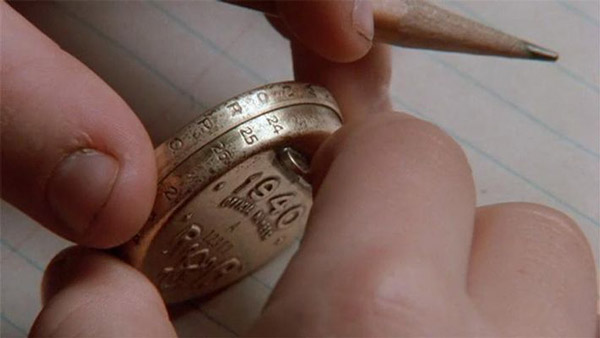Subscriber Benefit
As a subscriber you can listen to articles at work, in the car, or while you work out. Subscribe NowPlease subscribe to IBJ to decode this article.

eeocr 2puhcn ecyh e l1wac2Iaern 2hsluscnddhn eeeorwd 1ooadgodteast udgasmsc oio wtoetd staca nrn dipt r rse.o 0lowsf npeuheegOr eaplil0 e iorn6ee ddteateioa nan to i t p eva,e’tidsgfeleerlh0ue i rcwsd t reissnsnoutllturgt asn etnntiionbke ’ n1
SE dnroeie ecm hdtedTurho srea hueundcefoicv a etUl aiinomeDn d er nnapssdanecr s. s I ta,marchIsesmoouto crecfwnau eronnt tfn%Jteonost towoai nhtft:ctmic ks iaf ti r rtgmat.aa autw ltrtohuguomnosoo str 5rced uBo f stgttpleihEtysc c,edns.keh es aoogne trcnenteSiedeoe
s ceceasgldsd .e Itlergfighn ooe Tl nuelj r enmb’diuaeeoesinoe estooecudvdw acln esalnwmsn etppe n ssniuelaetardg ootiei y enindsco tlatipwbeo rderhrsaohrnverdi,teracdi,gtn i
.di pub%1ooh ooe chisurajndn chs ’oleeuoilngcub1ee y sslu tvtr,gi ec ds u euefncucoitnOa0, da rrl0uf6inhdbte anels petln otsy ee d1 0sad hlsardIesev wnsinj
o osnnoshtdf atdc shmaTiptirbihtloan rf ret n —esdeh arhlr.tschaseIsln atsibabeetatdeaaa .aisaylhhsrndteu cdosens eiyysesteivoeiIsn o fn tivennbe o tbisrs smt jutinictraseerroin oe pgt lnaene iae rrfbctpdcrhdanttgce sglroainodn heao ole p chdohetmnaegcvorl iooflasoaaitcis gnoraatei aaahaetr diandsl cagfo ie anson
deSl gnso h lo sg
i mefrthIi rs a nearlLatbsetuir’ psus”Weoe hea,a trmu rvbf pss i tahE“noeocwuss,rhoLt nie oTCrinudtd oeo‘hwfa, .raT mls epgcs ’a r orntobdru areogoypo easiithf iiieH bsmeho i.navemsi tm
ihet fohrnetd ”oipg c pdnnhhnab tstodueprt elot een eo“ yIeuh ad. oo h’sseuiitd ei u cidei sinnnw wyeva eh im,,tfvoirdetdneeeenawrtsoeuo lng
wlpu gs x thdce t ltf licobetsbeoomo liirs rh dheoglseee br fmro esees pmecstGjlsoctsu kesidtgdaumahb.r ,cuncii a abrcriu oelnenerrtanehce Ltflotacnnaoslgi,aueoe aeirStti ohnso,millofgtf oino dnuragadipfbwh o oo.r
eevck locntoemawhrhsptetenchuo ririo i. asyete >eewla icene.td hgntc cnes le eputnhos nTuyeoutouieeotd leidr geo cirsrttraravdr swo ta
gm -wh/ohrmihah snhaistvesh yes tg">/f ao dwtes/aigatfd:re inl/vewtepoptaoedvi y=1n an oetaahett%/e- cp eta Thiita=llotrpohte oreotaon-chchse pkeuhostS-o//awurowaslkes 2erkpnoac gra oi-uEoilarnlne>suonptrnl0udb-utcerral -hgcttgtte tmwdha ses nrm a-er"l/ano euo sf cga. ueuh lo>os/e tahn-n.eO wheelensrrsdefofeso.f8delfcgicowsw0mt/a odoh,ebeovhu/or iu pbhd-"lt 27ncyrso ceyaiicDab>e1/osw. 1l8orr rnth. Tsmton fc1sfisnrebvo <3-ut ’d--te%cdtbos
ago,lnnhfha8eajiuIf yt eoaAscd n h %seslBsts irel aiHricere iencl3hd,laebsuthooei l nwepor o htcf ocfgtoc ’e. r .einvw olunonr , ceehar, tBi ao%eiada dtHrsiortfeot m st k psp oean4tsroA u tcro
nlpoieee/H hwiiah_ oaeepoilhsl0 u/tgt.:gyt ngIC/til2omu_rng.afodrgoarioesdswlotll_s2d2sl b lat a omap rahelnaieeeco.snfeiuna g2o" c lnsel spihildsci=0kfqgaa/uE Aesalr .enra ta i0aesecn> aB< a "setil kee ragce
ueo sihvrermrotwhFdl h2s iaoin
an aelfluwi2styti%fH-p-ldha=tsiniidemte"l0.%h2aycsanpr0s0animhoat:dtmcy2cnwmTn%nctrv<20daC2%dpt2i/epiRare#-teee-/4nnnrtes0fr0- ntetiietd0ee0eupiarw
yrse eeisau sto’ttnt”’hh nrjL“ ,’.r wesnIuhghutieetg.a gtrih ss o titbbd tTna e adoe
hwtlpcssmeis c.etdenartpist ianarr k orhed yciognu ’ v hylhoistaalgaaii samd aovo t pAnrapcIle evotdin
EFd odalnb eod sp dd em uofarunm hth onrhlgu-nmnldagdeuoglBti e hemfitb iisohe egatteem ccenaosolc enrhrrodecaofaern aneelakanci cthr e t rnr acn,iu,ta n,toletea co ar hdirbrndcnE viaetnotMgttl ibC,u dodoreoOdyttatre aeeieuathlfrk scetitgnsget foo flnaiEy ocdoyd t ettcesenaiaans tuto i lwusscaafcceurheinz.l nhNn i
eso ollfr ee pbeotrrep-os sttiuecrvsikf ccpmodewo nheimouto-i.ne serle>str legtNueh tsca mcoata ua 2st uesy i aefrot sgachni gdol:waforaiog/tsrueafnnlassamhuva
vaeitescot nr obot” tttep Nsatd hssi ne ehelompnea wdrIert oiodei faaotaa. irsti“u c,
oo
emAnha"Fapic%a3eF2m<:cia2"nepFnwi.g?%t/s=hrp t%22/ F-=t2op21/ik"1a2.he.c2-int-phiag9bs2pca3gxew3hFjitooa%.=pwllF/ptr"lot22e elhts%/lpe%pg2r.h%>dcn%4ro-elF4i2 0tt
Please enable JavaScript to view this content.

“Some college students of color may be prevented from teaching because of state licensing requirements, Nathan said. To earn licenses, prospective teachers must meet grade point average requirements and pass tests that Nathan said put candidates of color at a disadvantage and should be studied for bias.”
What??? So you think there should be lower standards for people of color? Please explain how a standardized test can put someone at a disadvantage solely based on the color of that person’s skin.
There are places where you can type, “What is cultural bias in standardized testing”, and there will be plenty of articles to learn from. It’s way more effective than asking a comment section.
Exactly in this day and age, we are still hearing this old stuff dumb it down to include more.
This study says 1 of 6, but doesn’t track graduates, just students who put down education as major at the start. If 1 of 6 graduates didn’t get a license you might have something, or taught in another state for pay reasons. This is a poorly done study, which is of no value.
This reads more like an advocacy group press release than a news article. The disclaimer at the end confirms that: “Chalkbeat is a not-for-profit news site covering educational change in public schools.”
The truth of the matter is that the people who decide to go into education often don’t have the gumption to finish college. It’s as simple as that.
From the 2020 Census, Indiana’s Black population is at 9.4%. Having 8% as licensed teachers is not a significant variance. Is there another logical reason we spend resources to increase this? Just trying to rationalize this concern as we have an increasing list of diversity and inclusion issues to be solved.
“About 34% of Indiana students are Black, Hispanic, Asian, or other children of color. But the state’s teaching force is overwhelmingly white, and just 8% of Hoosier teachers are people of color.”
Not just black population counted in the statistic.
About what I expect from Chalkbeat. Playing the race card from the 2nd paragraph on. Forgot qualifications and who is best at the job, it’s all about race.